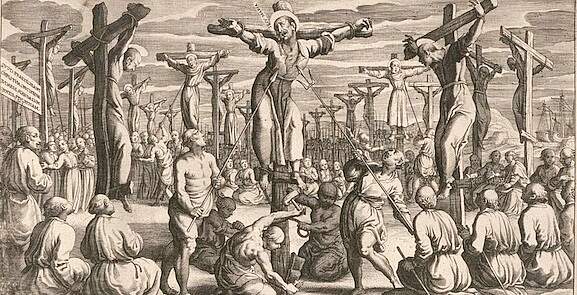
The Marian Shrine of Pontmain in France has a special spiritual connection with Japan, on account of the Red Rosary, known as the "Crown of the Japanese Martyrs." It is comprised of only 26 beads and divided into 2 decades.
Joseph Barbedette, one of the four young seers of Pontmain (Jan. 17, 1871), testified: "Even before the new parish priest came to our village, we were praying and reciting the Rosary of the martyrs of Japan." Inspired by the great missionary fervor sweeping across France in the second half of the 19th century, Father Michel Guérin, the parish priest of Pontmain, distributed these very special rosary beads to all the people of the village and, during the war against Prussia, instituted the recitation of this Rosary every morning to ask for peace and the safe return of the young men who had gone to the front. Today, this Rosary has fallen into disuse, except in Pontmain and Japan, where the memory of the 26 martyrs and the Marian apparition is still preserved.
To understand the history of the Japanese Martyrs' Rosary, one must go back to 1597, when 26 Christians (priests, religious and lay people, including children) were executed on a hill in Nagasaki, Japan, on the orders of Taïko (mayor of the palace) Hideyoshi Toyotomi. This was the beginning of a long period of persecution against Christians in Japan that ended at the beginning of the Meiji Era in the 1860s.
More than two and a half centuries later, in 1862, nine years before the apparition of the Virgin Mary in Pontmain, the 26 martyrs of Nagasaki were canonized in Rome by Pope Pius IX. Their feast day was fixed on February 6th of the universal calendar. Devotion to these 26 martyrs then spread throughout Europe, particularly in France. In Brittany, a priest named Father Hamet designed a small string of rosary beads consisting of two decades and composed of 26 blood-red beads. He named it the "Crown of the Holy Japanese Martyrs."
This devotion spread quickly and eventually reached Father Michel Guérin in Pontmain, who immediately distributed the small red rosaries to his flock and taught the prayer to the children.
Translated and adapted from: Aleteia